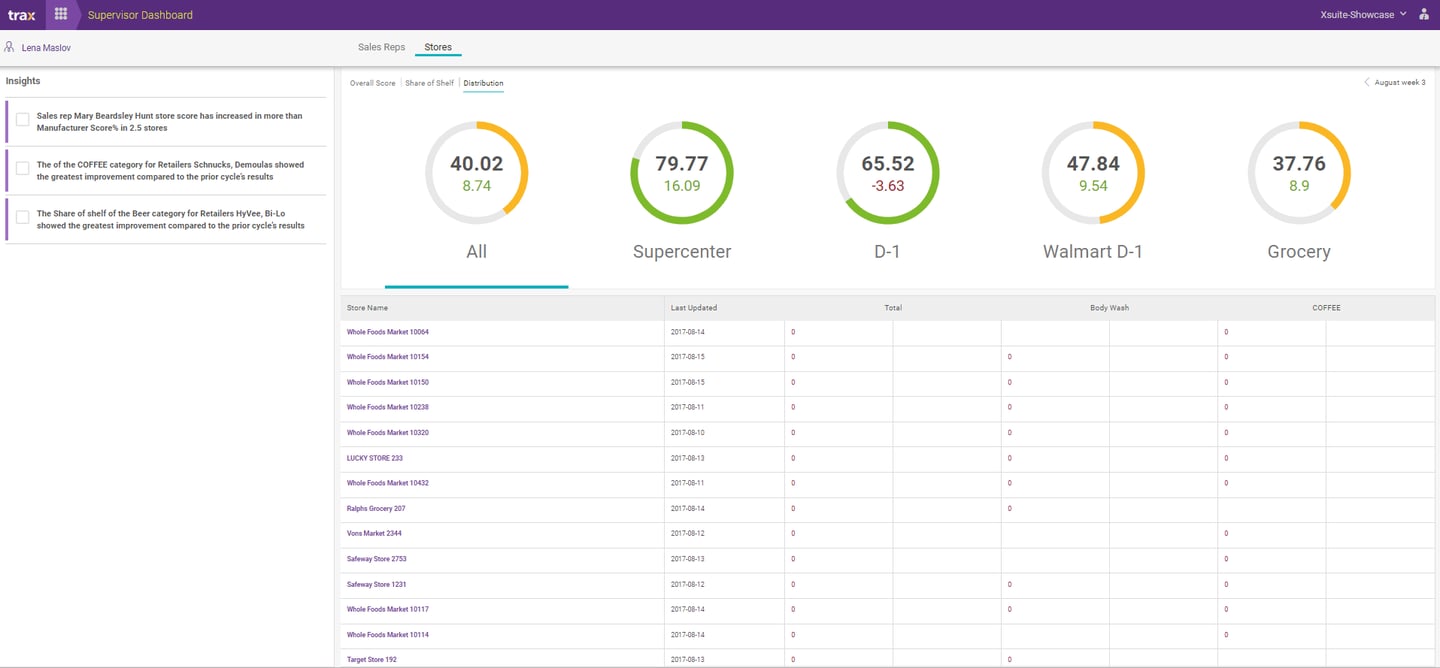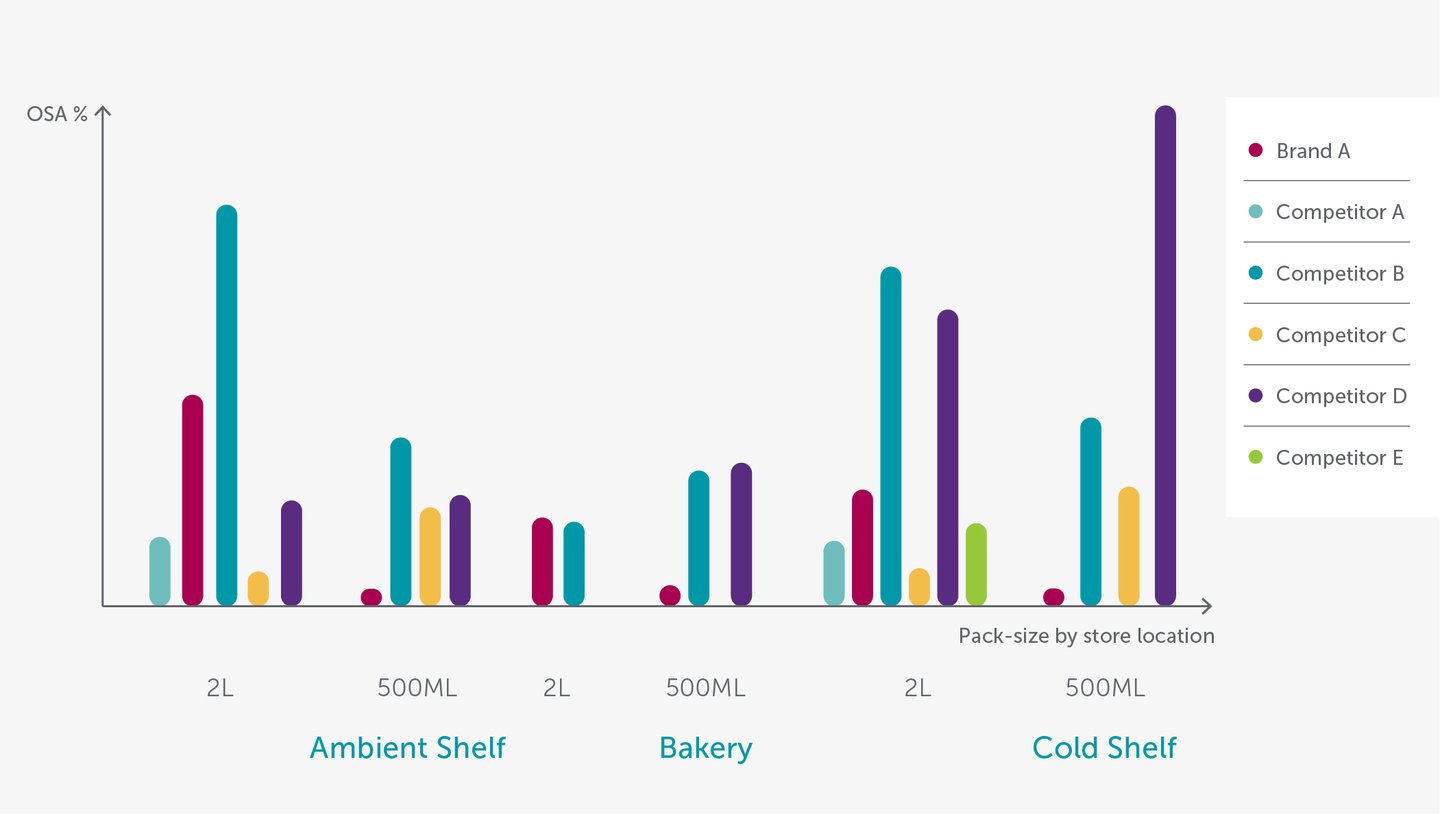
3 Data-driven Approaches to Improve On-Shelf Availability
More than 50 percent of stockouts are the result of inefficient store practices like replenishment, store ordering and forecasting rather than upstream supply chain issues.
Existing in-store inventory measurement methods have failed to keep pace with the fast moving retail landscape. With the industry currently struggling with a high out-of-stock (OOS) rate of eight percent, addressing this issue requires innovative technologies that offer a closer, more granular look at on-shelf availability (OSA).
Tracking OSA Using Computer Vision and Image Recognition
AI and machine learning technology is digitizing the retail store, which means brands and retailers can track what’s happening to every SKU in every store in near real time. Converting actual shelf images into insights, this new breed of shelf data can increase availability management and perfect in-store execution.
By identifying patterns that occur as a prelude to or in the aftermath of stock-out scenarios, Trax data can help maximize product performance at shelf. Here are 3 simple ways in which you can approach your OSA problems using Trax:
1. Check which stores are facing OOS issues
A store in a residential location may face peak hours on weekends, but a downtown store close to office buildings may have most customers walking in during lunch hours on weekdays. Demand trends vary across store types, as do product assortments. Neither scanner data nor manual auditing methods offer store-specific data at the individual SKU-level, making it difficult to firstly identify what’s out of stock, and secondly, to resolve issues.
With Trax Retail Execution, sales supervisors can access a console (Fig. 1) to track out of stocks and on-shelf availability at a store, category or SKU level. Alerts let you know if OSA dips below a certain threshold, so you can take quick action. For example, you can set up an alert if the OSA of your hair care category falls below 60 percent in more than 30 percent of your individual outlets. Or if your 330 ML beverage product is out of stock in more than more than 15 of your key discount retail stores.
Fig. 1: Supervisor Console in Trax Retail Execution
2. Know which SKUs to prioritize
Some SKUs tend to be out of stock more often than others. This can be due to high demand for particular SKUs or promotions spurring more demand than expected. But it can also signal underlying problems, such as inaccurate shelf tagging or misplacement. For this reason, it’s important to isolate SKUs with frequent OOS issues to prioritize their shelf availability.
Trax’s solution can help with this. Despite multiple SKUs and nearly identical product facings, Trax can differentiate between products with a high degree of accuracy – tracking SKUs with obscure packaging under poor lighting conditions and detecting newer product versions for example.
Fig 2: Availability and Distribution Tracking of Hero Products
A sample of Trax data (Fig 2) shows the OSA of nine products under the Hero range across six stores. Here, Store A is the worst performing, with six products unavailable at the time of audit. Products 1, 4 and 7 require attention, as they are unavailable in three stores. By comparing OSA levels across stores and SKUs over time, manufacturers can identify patterns of movement and pinpoint repeat offenders.
3. Benchmark against competitors to spot gaps and opportunities
Now that you know which your problem stores with low availability issues are, you can also start to uncover how your products perform against competitors.
For example, a client used Trax to analyze the performance of its tea category products against that of its competitors. The client narrowed down stores with lower availability rates and then dissected the problem by comparing its OSA rates against those of competitors, not just at a store level but across different shelf placements and locations (Fig 3).
Fig. 3: OSA benchmarking chart
The benchmarking study revealed merchandizing gaps, particularly in the 500ml category. Further, the exercise revealed that competitors provided smaller packs in cold shelves for shoppers to consume immediately. With a clear view of targeted actions to take, the client was able to improve availability where it matters most and also reduce the cost of execution.
Translating Insights into Execution
In an era in which fragile brand loyalties can lead to high opportunity costs, cutting-edge technology is critical for managing product availability. Collecting real-time data from the field and translating this data into actionable strategies can be a real game changer.
To learn more about how in-store execution data can strengthen your OSA management, watch our webinar: Leveraging in-store execution data to build you category strategy.




